
Sometimes it can be hard to tell friend from foe in the garden, there’s your obvious nasties like slugs and snails but….
“Whats that pretty red beetle on my Lilly’s? or that lovely shiny green one on the rosemary? they’ve got to be good ones, they’re so pretty! right?”

Dont be fooled, they’re not!
“Ok, so how about that ugly spiky black and orange one, he scuttles round so fast he makes me feel creepy just looking at him!”

No! Stop! Dont squish him! That’s a baby Ladybird!!
Ok, lets start at the beginning, which bugs are your friends?
The good guys…
The ladybird

We all recognise the humble Ladybird, most of us grew up with the rhyme..
Ladybird, ladybird,
Fly away home,
Your house is on fire
And your children all gone;
All except one
And that’s little Ann,
And she has crept under
The warming pan.
Which is actually quite macabre when you think about it! The rhyme dates back to the 1700’s and probably has some subtle subtext like “Ring’a’ring of roses” which refers to the black death but anyway back to the Ladybird!
The ladybird isnt hatched full formed though and has 3 distinct parts to its life cycle. their year starts around March time when the overwintering adults start to leave their hiding places. They feast upon the early aphid populations, building up their strength and giving us gardeners a much needed helping hand. They start mating around May *starts playing Je t’aime*
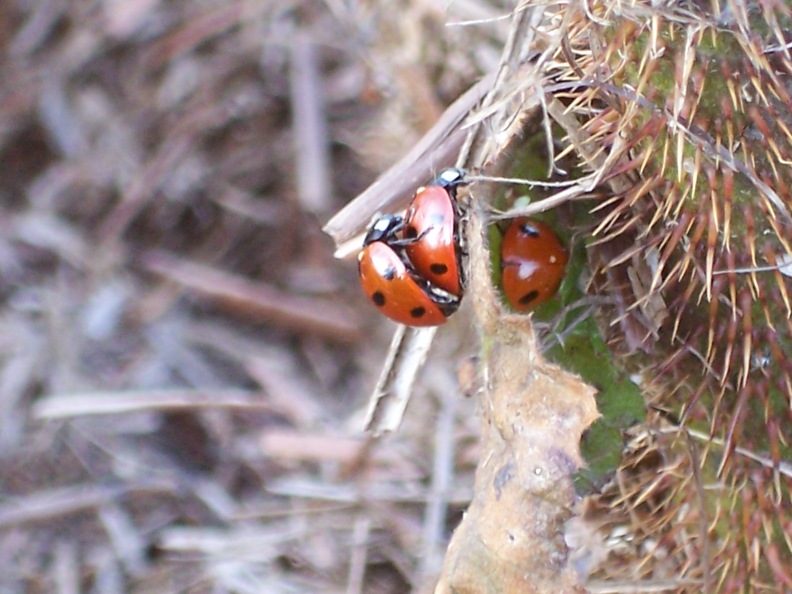
Is this too intrusive?
Moving swiftly on! Around the start of June the females start laying their eggs, weirdly this is not something I’ve ever observed. they will pick a plant that has a good host of food for their babies to tuck into as soon as they’re born and oh boy do they eat! The babies are voracious predators but look totally alien, as the photo shows.

They will stay in this form gradually growing larger until July. Thats when they pupate, much in the same way as Caterpillars. So if you see an orange and black blob stuck to a leaf please don’t think its a nasty and hurt it!
Heres an example… Ladybird pupa
This is where they turn into the ladybirds we recognise, they will start to emerge around August and carry on munching those nasty aphids for you. They carry on doing so right up until the temperature drops sometimes as late as October when they hide again ready to start all over next year with a new generation.
If you allow a colony of aphids to live on sacrificial plants in your garden you can ensure a healthy population of these wonderful predators to build up. You will never be entirely aphid free even with chemicals but if you put the spray bottle down for a season and give them a chance these guys will do the work for you. I personally move them round, if I find one plant is starting to get mullered by aphids I’ll stick a few ladybirds on it, it helps. After all, ants move aphids around… but i’ll get to that in a bit!
Good sacrificial plants ive come across are Nasturtiums and Feverfew, both pretty enough to give garden space to and attractive to the pests.
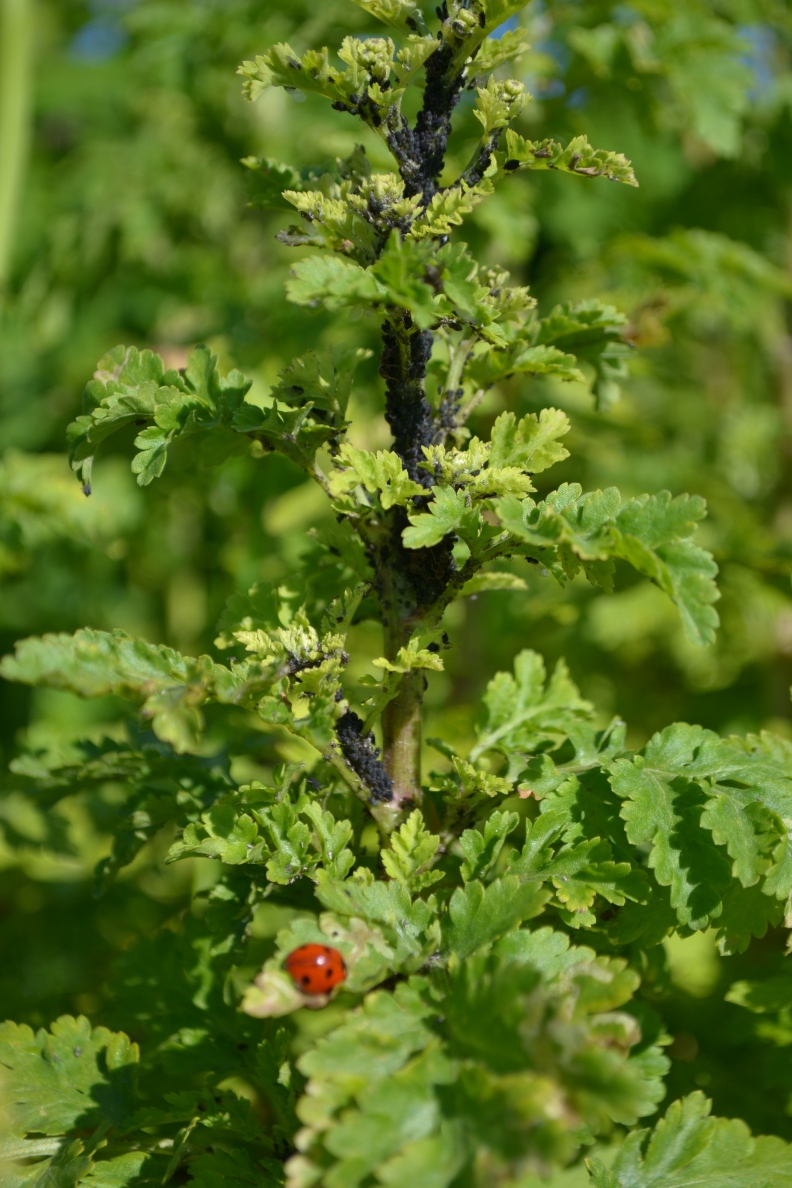
Not all ladybirds are black and red, we have some amazing ones in the UK and here’s a great ident guide of both adults & larvae
Its worth mentioning Harlequins at this point, please don’t worry about killing them, its way too late. They arrived on our shores in 2004 and have been trooping steadily across the country since. Yes they are an invader & yes they will predate our natives but in some parts of the UK they are now the dominant species. If you kill every one you see you will have no predators left. Nature will always find a balance if we don’t interfere.
So onto our next friendly predator.
Hoverflies
These beautiful flighty, little chaps are an extra special favourite of mine. If you get them drunk on nectar and hold your finger up alongside the flower they will sometimes drowsily come and have a bit rest on the tip, so cute! I found trailing petunias from a hanging basket are particularly good for this sport of hoverfly charming.
But if they drink nectar how can they be predators I hear you cry!

Like the ladybird the hoverfly has several stages to its life and it’s when it’s in its larval stage it turns into an aphid killing monster and its an UGLY monster! I can’t stress this enough it looks vile, here see for yourself…
It would be easy to mistake this slimy looking thing for a baddy, right!
This is one of the reasons it’s so important to be able to identify your garden inhabitants & their lifecycles. In the UK we have 270 known species of hoverfly and they are valuable not only as predators in their larval stages but also as pollinators. About 110 of the known species produce larvae that feed on aphids but not all do. So little is known about hoverflys though including the impact they make on plant pollination.
Toads
I am a toad and I live in a hole!

And they do! This chap nearly got himself buried whilst I dug over a border in the middle of summer. If any of you garden on clay you’ll know that during dry spells it can develop some impressive cracks. They can become valuable homes for these friendly predators. Toads spend a lot of their adult lives away from water and will clear your garden of all those nasty slugs and anything else that’s foolish enough to crawl into its range. They can move surprisingly quickly if needs be but always keep an eye out for a hiding Toad when digging or clearing leaves. They prefer damp conditions and will take up residence in piles of detritus under hedges and in corners you don’t normally touch.
I’ve had “pet” toads that took up residence in polytunnels and glasshouses too, always a welcome houseguest!
Another amphibian worth mentioning which is a good indication of your gardens health are Newts, not so much of a predator of pests more of a sign of a healthy ecosystem… and supercute!

Warning!
For those of you with phobias BRACE!!
(but please keep reading as I saved a cutey for our last garden friend I promise!)
Spiders
Now I’m not the biggest lover of these 8 legged freaks but we’ve come to an understanding, stay out of my face & I won’t kill you!
I swear they know, I rarely get attacked by one now they know I can fight back!
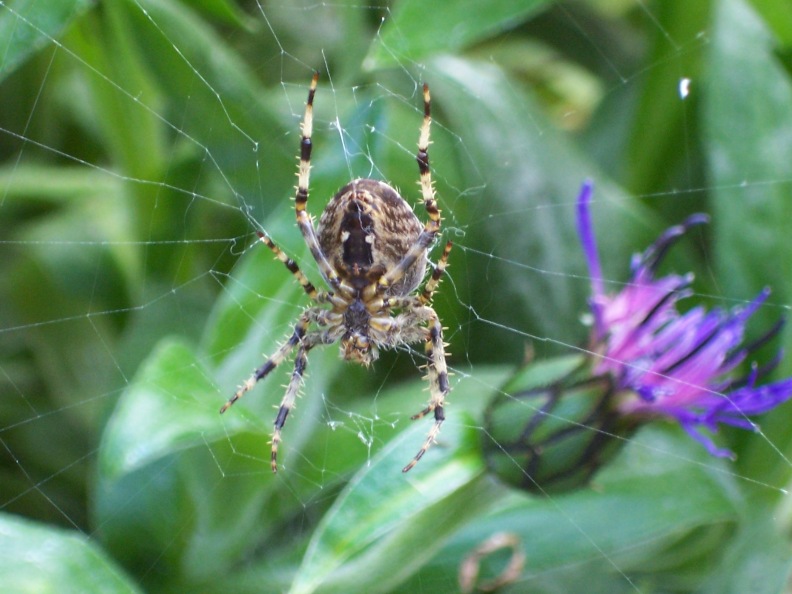
These chaps in their myriad guises are a gardeners best friend, not all of them spin webs some hunt on the foot…feet…legs… oh god stop!
What you may not have noticed though are their nurseries. A ball of baby arachnids!

Dont do what i did the first time I spotted one, I poked it to investigate what it was and it EXPLODED!! Baby spiders EVERYWHERE!!! (and me running down the garden screaming like a Banshee, true story). Leave them alone and let them do their thing, ugly as sin but twice as effective against Aphids!
Come September though you will see me walking round the garden like some kind of ‘en guarde’ ninja, hand held vertically a foot in front of my face to break any errant webs before they touch me…. better that than the flailing windmill I resemble if they do!
One last creepy crawley which may make you shudder a bit….then a cutey!
Snakes & Slowworms
I personally love and adore these guys but I understand not all of you do
Snakes in the UK eat mainly small mammals and amphibians, so they are good at keeping the population of mice in check, if you’ve ever lost a crop of broad beans or peas to them you’ll appreciate that. I had a resident grasssnake in the polytunnel one summer, I’m pretty sure she laid her eggs in our compost heap, sadly I disturbed them when turning the heap. I did try to rebury but im not sure I did it right?
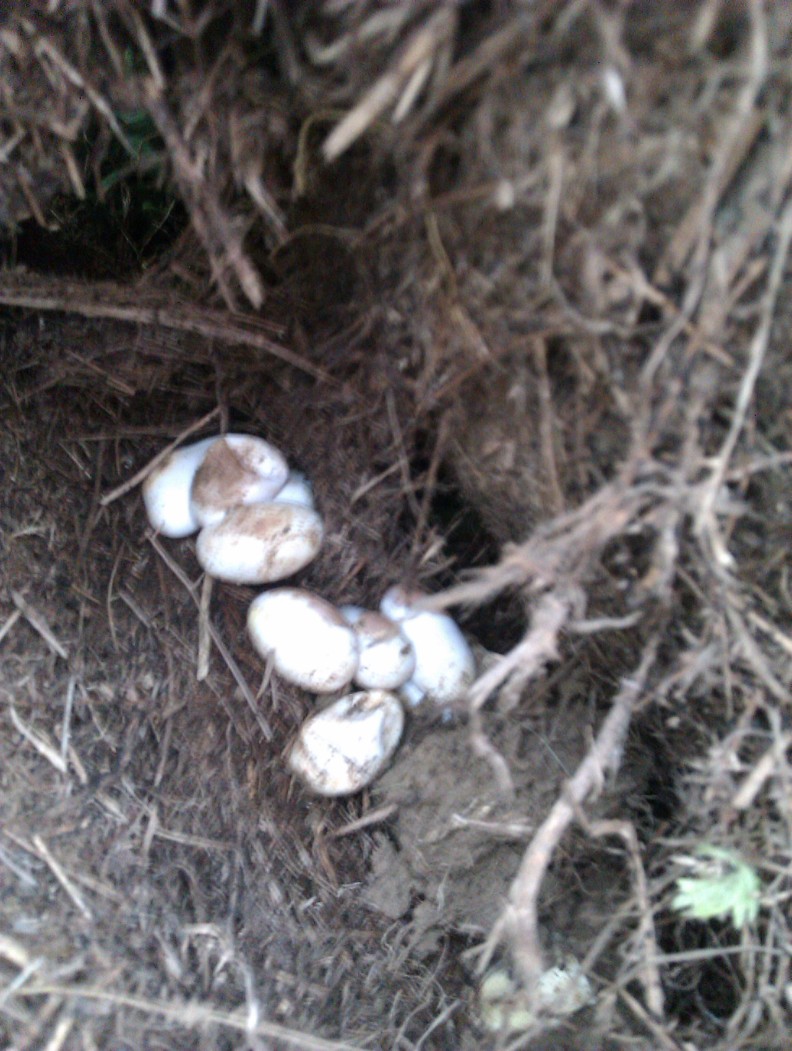

If you do come across these whilst turning the heap try to replace them as they need a small amount of warmth to hatch.
Sometimes, if you’re lucky, in the height of summer you will see a grass snake taking a swim (so cute… if you like that sort of thing)
Slow worms are even better!
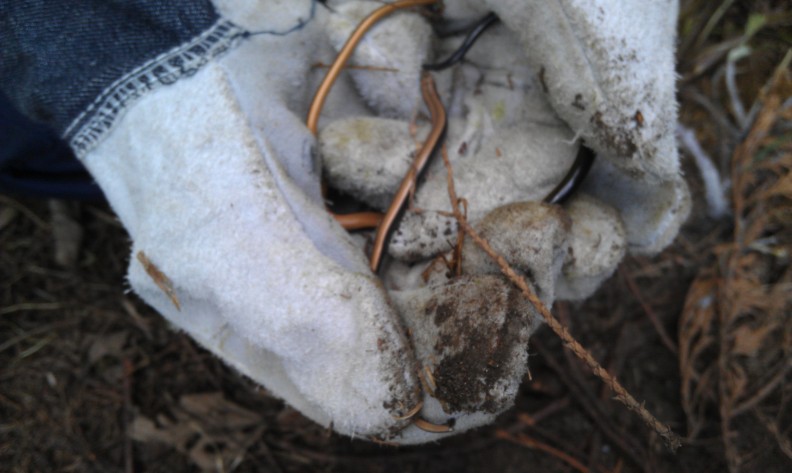
These dudes are SO COOL!!
They really do chow down on the slower moving pests in the garden such as slugs and snails. They can grow up to 50cm so the chap in my pic is just a baby. If you find one don’t move it just leave it alone.
Technically not a snake, a legless lizard if that makes you feel any better?
The only snake you need be wary of in the UK is an Adder and in all my years of searching I’ve only seen one which disappeared before I could get close. It really is a case of they’re more scared of you than you are of them…. honest!
and so to my last goody!
Hedgehogs
These once prolific visitors to our gardens in the UK are having a hard time.
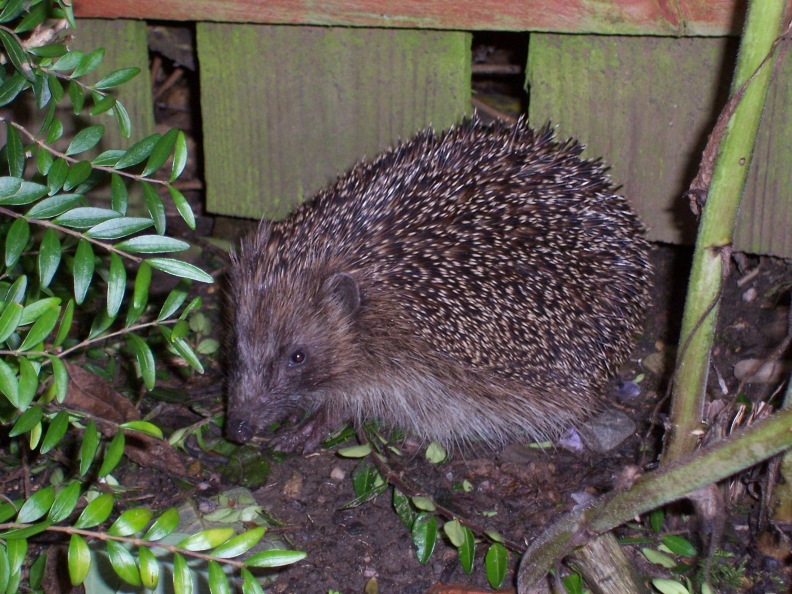
Good solid fences are not their friends, they need an entrance into your garden, a gateway or even a small hole at the bottom of a fence can make a real difference. Somewhere to hibernate is also essential (maybe behind the shed?) so think about installing a Hedgehog hidey hole? One of the worst thing in recent years though are slug pellets, a slow, horrible death for these cute little chaps ensues after eating poisoned slugs. If you must have a fight with slugs and snails try to do it in such a way that it doesn’t harm your other garden wildlife. The decline of birds and Hedgehogs can be linked directly to the rise of chemical use in our gardens. These guys eat your pests so if you eliminate them completely they have no food. To garden in a wildlife friendly way you need to find a balance, to have predators there has to be some pests. If you find your pest levels are getting out of hand its a warning that maybe you’re overfeeding your plants (soft sappy growth is more likely to fall victim) and you’ve killed off your predators by spraying insect killer, taken away overwintering areas or poisoned them off.
Hedgehogs can be seen as an indicator species, if you have a happy healthy population keep doing what you’re doing, otherwise reassess how you garden.
If you’d like to help Hedgehogs in your area these guys can give you great advice…
Tiggywinkles Hedgehog sanctuary
So there’s some of the good guys in your garden, I’ll bring you the bad & the ugly soon!

Cracking stuff! I love this! I even Laughed Out Loud a few times! 👍
LikeLiked by 3 people
yay! youve made my day 😀 thank you!
LikeLike
What a great post, well done !
LikeLiked by 1 person
Thank you 😊
LikeLike
Brilliant blog, highly informative and funny. Thank you for sharing!
LikeLiked by 1 person
thank you 🙂 Glad it made you smile!
LikeLiked by 1 person
Hi Lou, each year I catch a few ladybirds to introduce into the greenhouses. Sure enough within a short while larvae will be feasting on aphids, which is hugely satisfying. I once had to stop a colleague at a garden centre, just in time, from spraying when she found one (thinking it was a nasty). I have plenty of grass snakes where I work too and see them regularly. I just wish they fed on aphids rather than my lovely frogs and toads. Dave
LikeLiked by 1 person
Its amazing how many people have never been told what a baby ladybird is! So glad you stopped her!
I do so love the snakes and try to convince myself theyre only eating the mice…. i try 😉
LikeLiked by 1 person
Hi Louise
Having gardened professionally for over 30 years, remembering pests and diseases in gardens are always a stumlbing point for me rushing about cutting grass, weeding and pruning. Your blog on the good guys was an invaluable reference point to me . I look forard to reading about the bad guys and other blogs to and up my wildlife friendly game. John
LikeLiked by 1 person
Thank you! Its awesome knowing im helping people out! If it helps ive just published one on the bad guys 🙂
LikeLike
A really useful blog, identifying our garden friends in their different stages of growth. It is so easy to kill everything without realising the damage you do.
LikeLiked by 1 person
Im so glad you enjoyed it Brian 🙂
LikeLike